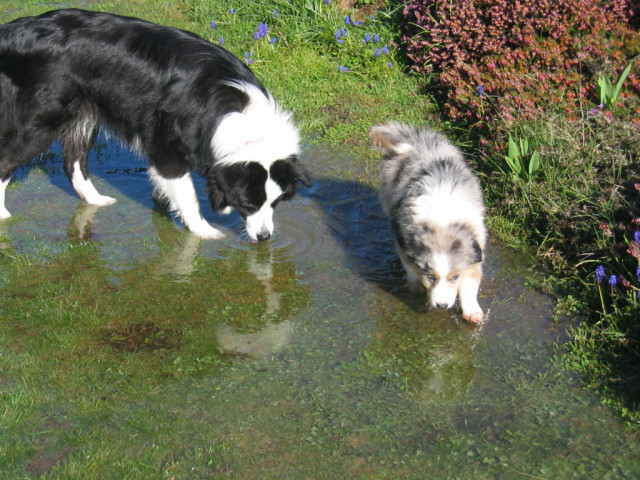QuestionHello,
I have an 11 week old male labradoodle puppy. He was very timid, even at the breeder's, and he continues to be timid around new people and dogs. He has started barking when he sees another dog on the road or when we approach one for him to meet. I have tried to socialize him as much as possible, with different people and dogs, but it seems to be getting worse and more persistent. Once he meets the person or dog, he is shy, but stops barking and wants to meet them. I am unsure if I should ignore the behaviour or reprimand him for it. I have tried many things, including positive reinforcement while he isn't barking, but the behaviour is continuing. I am wondering if there is any other technique I should try, or if I should just continue doing what I am doing.
Thank you!
AnswerI can't SEE what you're doing, and I can't SEE what the puppy is doing. Barking is a method of communication along with body language. You need to learn how to read dog body language and understand what barking means in the context of dog to dog communication. Your pup's barking is most likely a sign of excitement (normal vocalization). Reprimanding him will make him FEARFUL of approaching dogs; the positive reinforcement you're using when he's not barking may be misapplied and confusing him. Using positive reinforcement means you MUST know what the dog is THINKING and reacting to or you will inadvertently reward the internal motivation. Go to Turid Rugaas' web site to learn how to "read" dog:
http://www.canis.no/rugaas/index.php
To teach a dog to "shush" requires you capture the barking behavior to begin with, but this dog isn't barking an "alarm" (he's too young), he's most likely vocalizing out of excitement and stress (from your report). Using a clicker, you can easily help the dog to identify which of his behaviors is ABOUT to be rewarded. I suggest you learn about the clicker by reading Karen Pryor's "Getting Started: Clicker Training for Dogs", visiting her site: Reaching the Animal Mind (http://reachingtheanimalmind.com/) and ClickerTraining.com, where you will find many articles that will help you to understand, and apply, this method. Meanwhile: When the puppy barks, STOP moving forward; move forward ONLY when he is not barking (within five seconds of its cessation). If he does not stop barking because you've stopped moving, go in the opposite direction quickly for a few steps, circle left or right, and return toward the approaching dog. Help your puppy to achieve a calmer reaction to approaching dogs in this way until you've had the opportunity to review the material suggested.
I also suggest you find a training venue where ONLY positive reinforcement is used and sign up for a puppy kindergarten class. All puppies should be approximate age and size, the trainer should have national credentials from a credible training organization, and you should observe a couple of classes before bringing the puppy. In this venue, he will learn to interact with other puppies without fear under the guidance of an experienced professional trainer.

 Dog in Heat?
QuestionLily and Jorge
QUESTION: Hello,
We have
Dog in Heat?
QuestionLily and Jorge
QUESTION: Hello,
We have
 aggression in aging dog
Question
Niko
I have a thirteen year old, female, Samoy
aggression in aging dog
Question
Niko
I have a thirteen year old, female, Samoy
 licking the floor not stop
QuestionGeorgie
QUESTION: Hi,
I have a 7 year ol
licking the floor not stop
QuestionGeorgie
QUESTION: Hi,
I have a 7 year ol
 Black lab - 1 yr
QuestionSheba
QUESTION: My lab loves to bite her
Black lab - 1 yr
QuestionSheba
QUESTION: My lab loves to bite her
 Mini Daschund with anxiety issues
QuestionAbigayle
QUESTION: I have a 3 1/2 yr old
Mini Daschund with anxiety issues
QuestionAbigayle
QUESTION: I have a 3 1/2 yr old